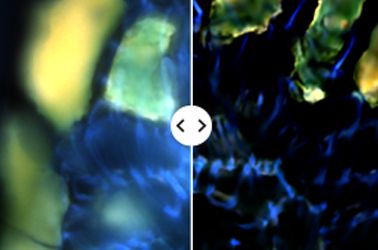Images taken with a light microscope are never true representations of the specimen. Error sources, which have to be controlled, are sample preparation and staining protocols as well as optical aberrations and limitations of microscope and digital camera.
To turn the microscopic image into a close representation of the specimen ground truth restoration algorithms are in use. In this presentation, we will focus on restoration of three-dimensional datasets, a process called deconvolution. The mathematics behind these methods will not be covered. Rather, the aim is to provide a brief, intuitive introduction that allows us to assess the possible uses of these filters in a specific application. For this reason, we will demonstrate these filters live on selected example images.
Presenter: Heiko Gäthje
Senior Trainer, Olympus Europa
As a biologist with a focus on neuronal development of insects and the structure of sialic acid binding neuronal proteins in mammals, Heiko Gaethje gained first experience with widefield and confocal fluorescence microscopy and image processing of 3D data.
Heiko joined Olympus in 2004 as a web content manager in the Marketing and Communication team. Since 2008, he has worked as a microscopy trainer at the Olympus Academy and is responsible for the conception and introduction of digital learning tools. In addition, he supports and conducts microscopy training courses at the EMBL Heidelberg and the Zurich Winter School on Advanced Microscopy where he regularly answers questions related to image processing and image analysis.

